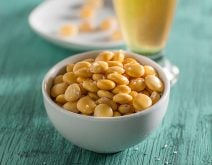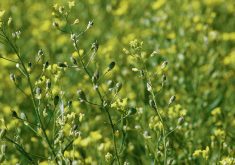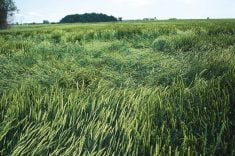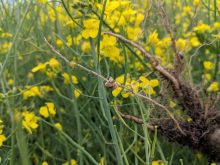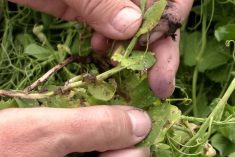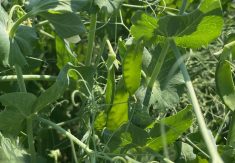Aphanomyces root rot is not airborne or seedborne, like clubroot of canola, the disease is soil borne. This fungus, like clubroot, forms resting spores that can last for 10 years in infested soil. Infection of the legume host can take place at anytime in the season but is not obvious early in the year.
The root rot fungus has only one disease cycle per year but masses of water-moving zoospore can be devastating to the pea crop. You will see small to very large areas, especially along drainage channels or wet spots of yellow dead to dying pea plants with brown coloured rotten roots.
Read Also

Claas brings 1000 Series SP forage harvesters to Canada
In mid-August, Claas unveiled its new line of Jaguar forage harvesters at an event in Visalia, California, deep in the heart of that state’s dairy region.
To prevent aphanomyces in your fields:
1. Check every field growing peas for root rot, paying particular attention to field entrances.
2. Remember, there are no resistant pea varieties.
3. Ensure that any custom seeding or harvesting equipment is steam cleaned before access to your aphanomyces-free cropland. Any utility or oil service equipment that has access to your cropland must also be steam cleaned. Hold this equipment to rigid soil cleanliness.
Does this not sound like clubroot control in canola? Yes, because the disease life cycles of root rot and clubroot are very, very similar. Both diseases move very rapidly via motile zoospores in wet soils.
Controlling aphanomyces root rot:
1. Repeat: there are no resistant varieties.
3. Surprisingly, canola crop residue breaks down in the soil to produce soil fumigating isothiocyanates and thiocyanate compounds that are toxic to aphanomyces root rot spores. Peas following canola may do better that peas following cereals if your cropland is infested with aphanomyces root rot.
4. Follow as-long-as-possible pea crop rotations on badly infested land.
5. Be aware of aphanomyces in your area or your own cropland. Avoid moving equipment of any kind from infested cropland to uninfested areas. If possible, seed infested cropland last of all.




